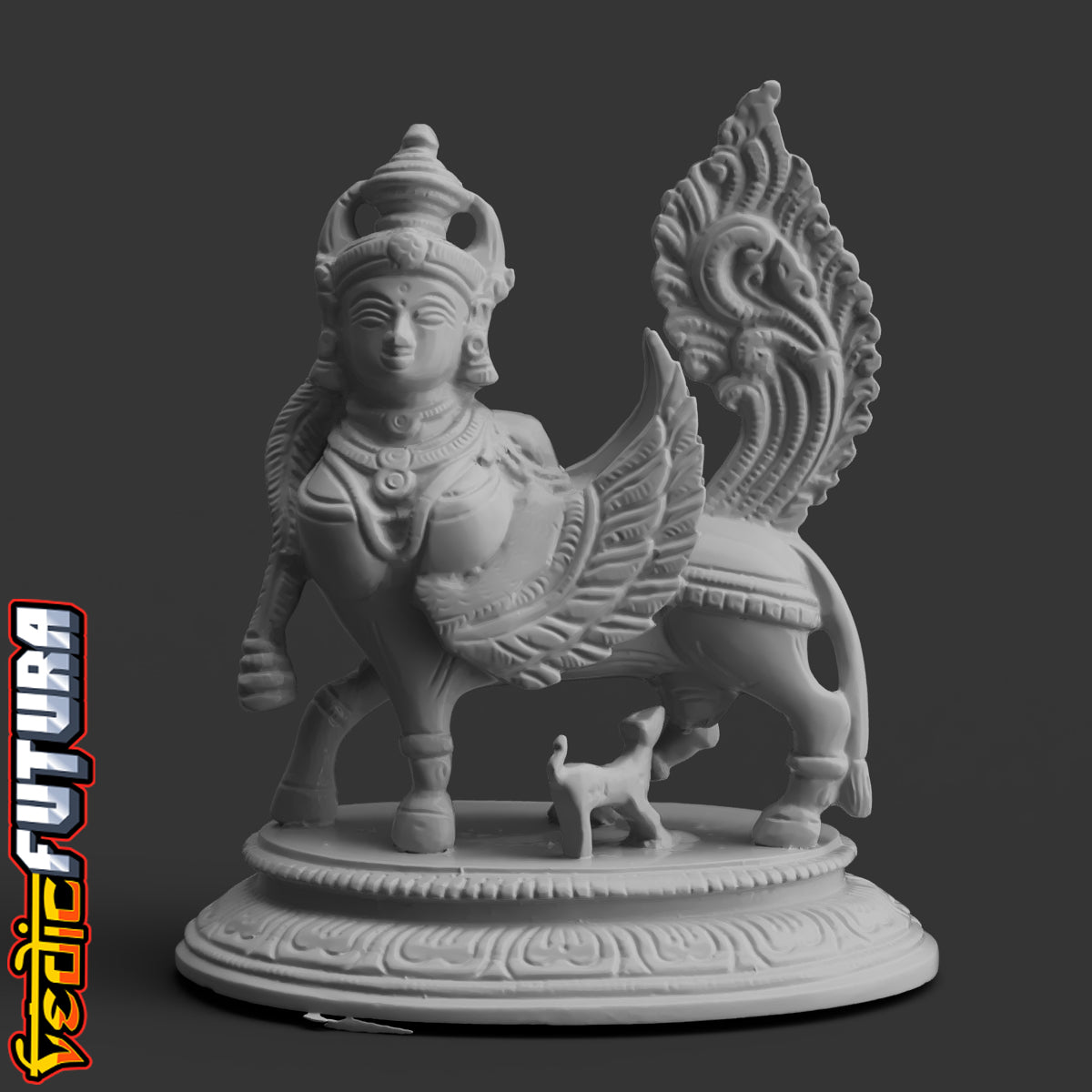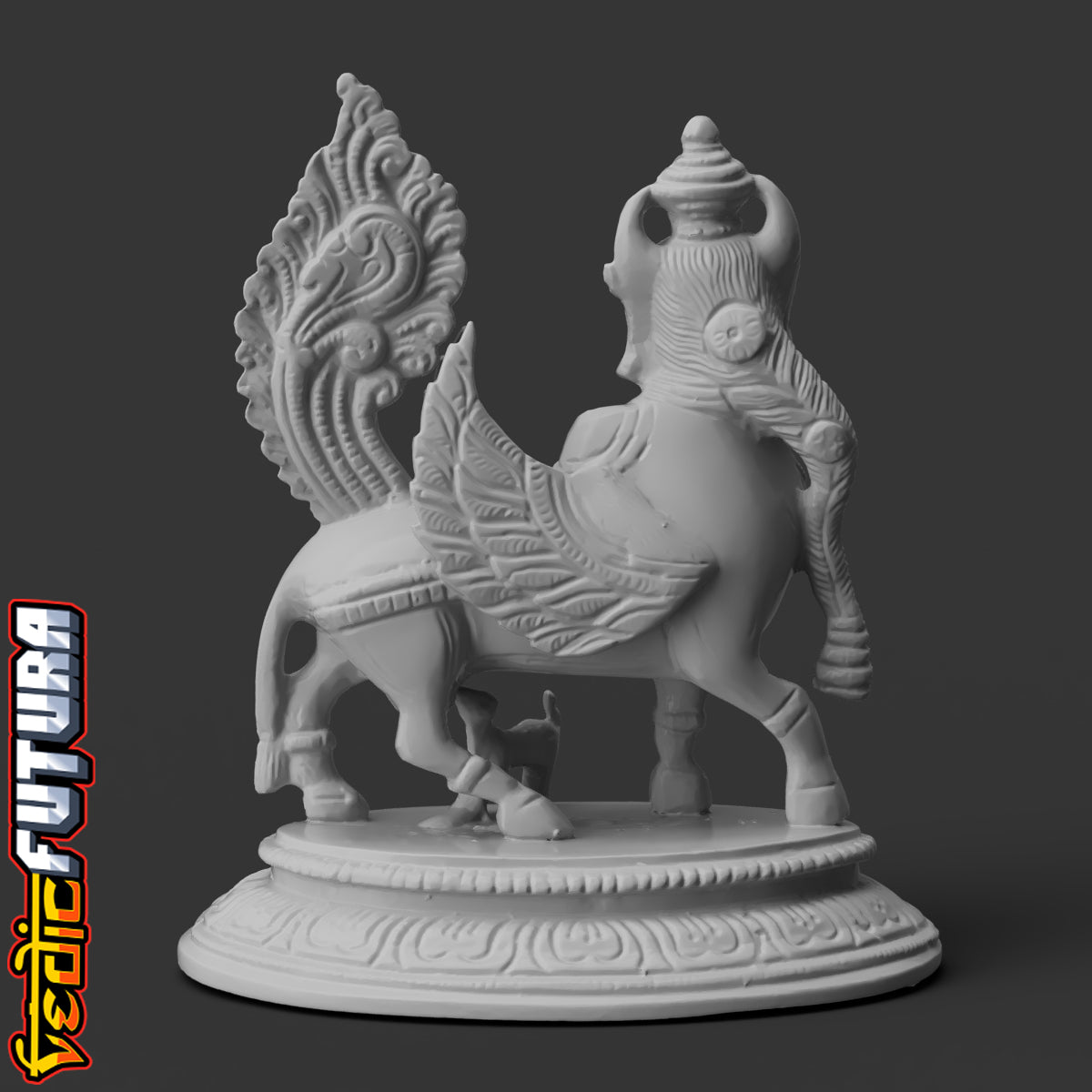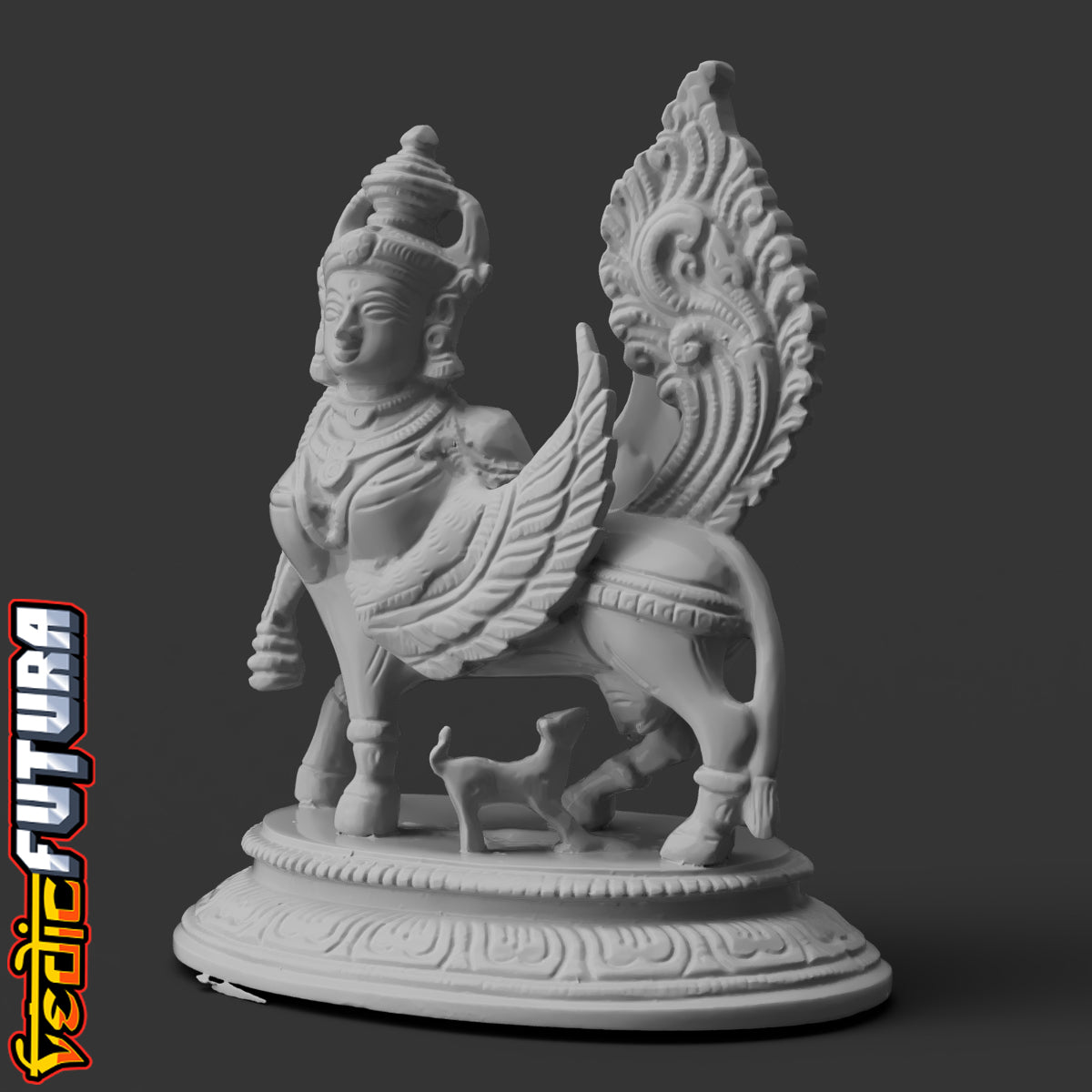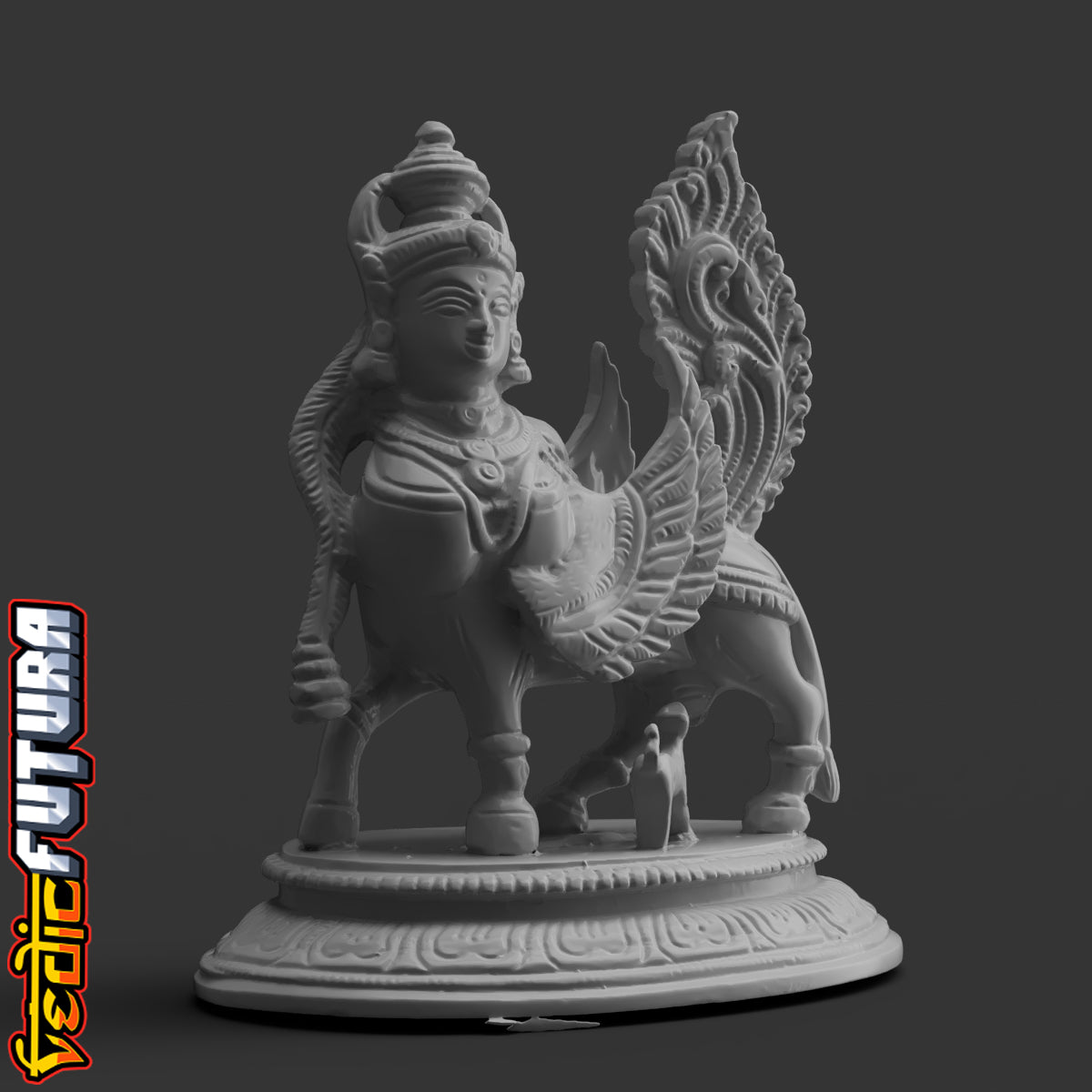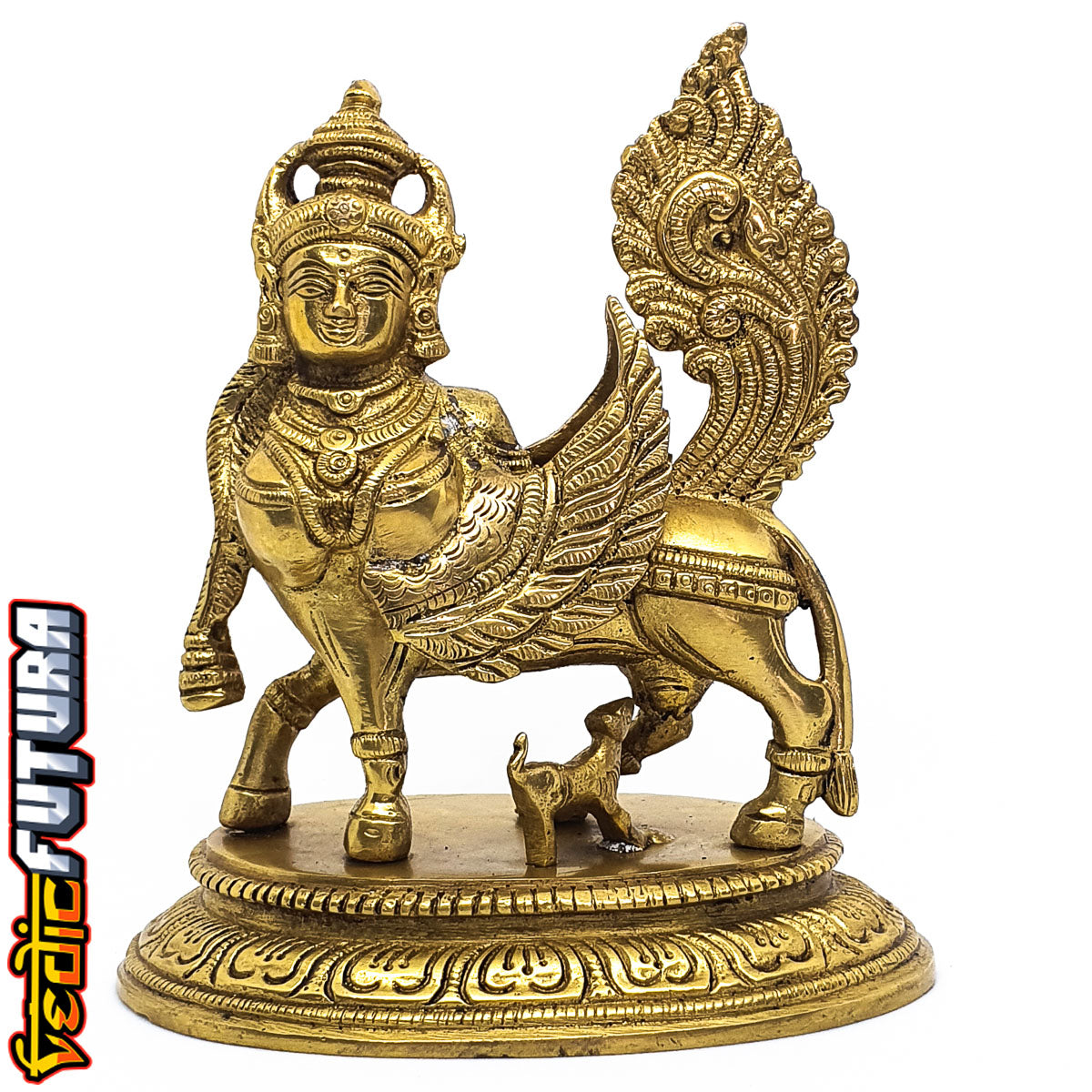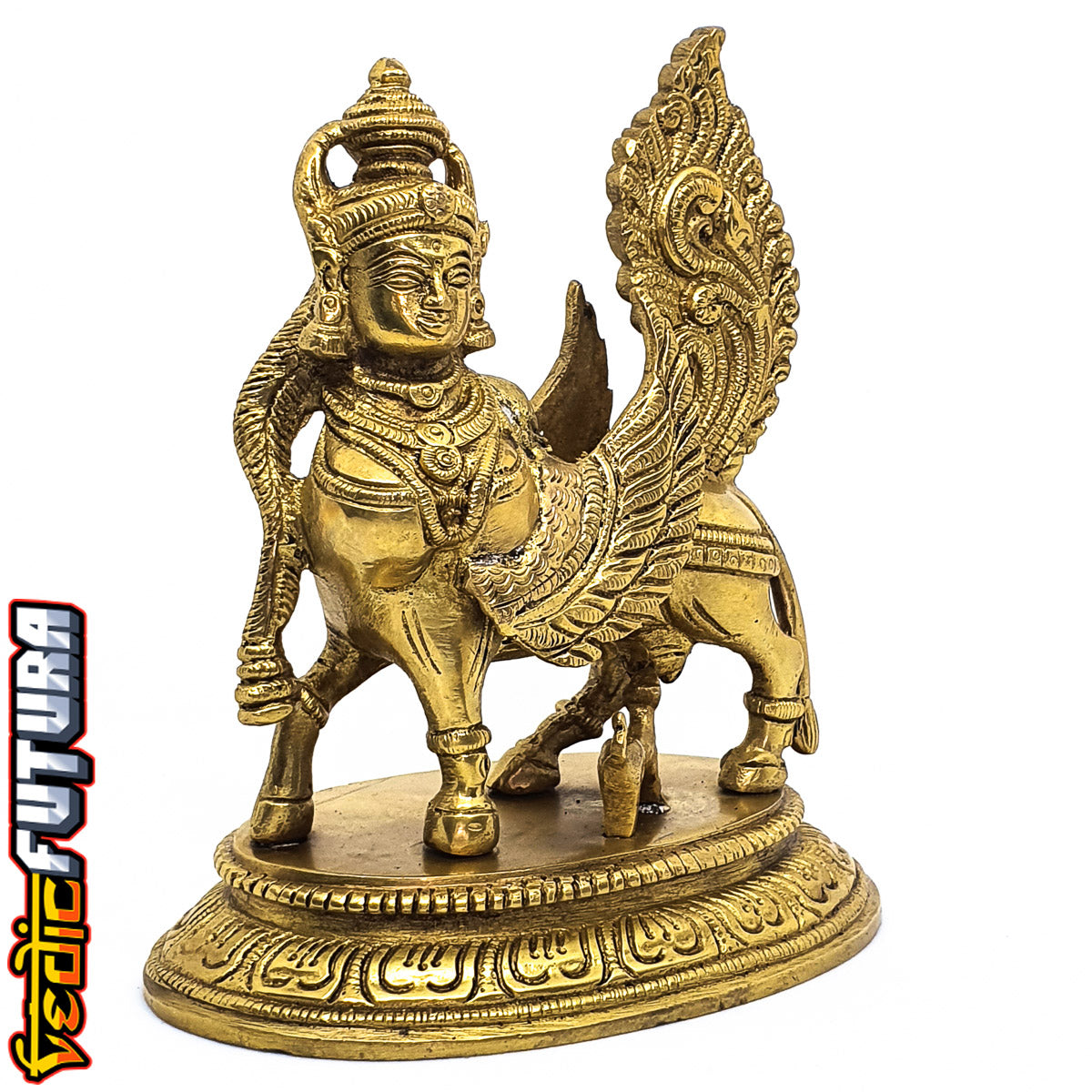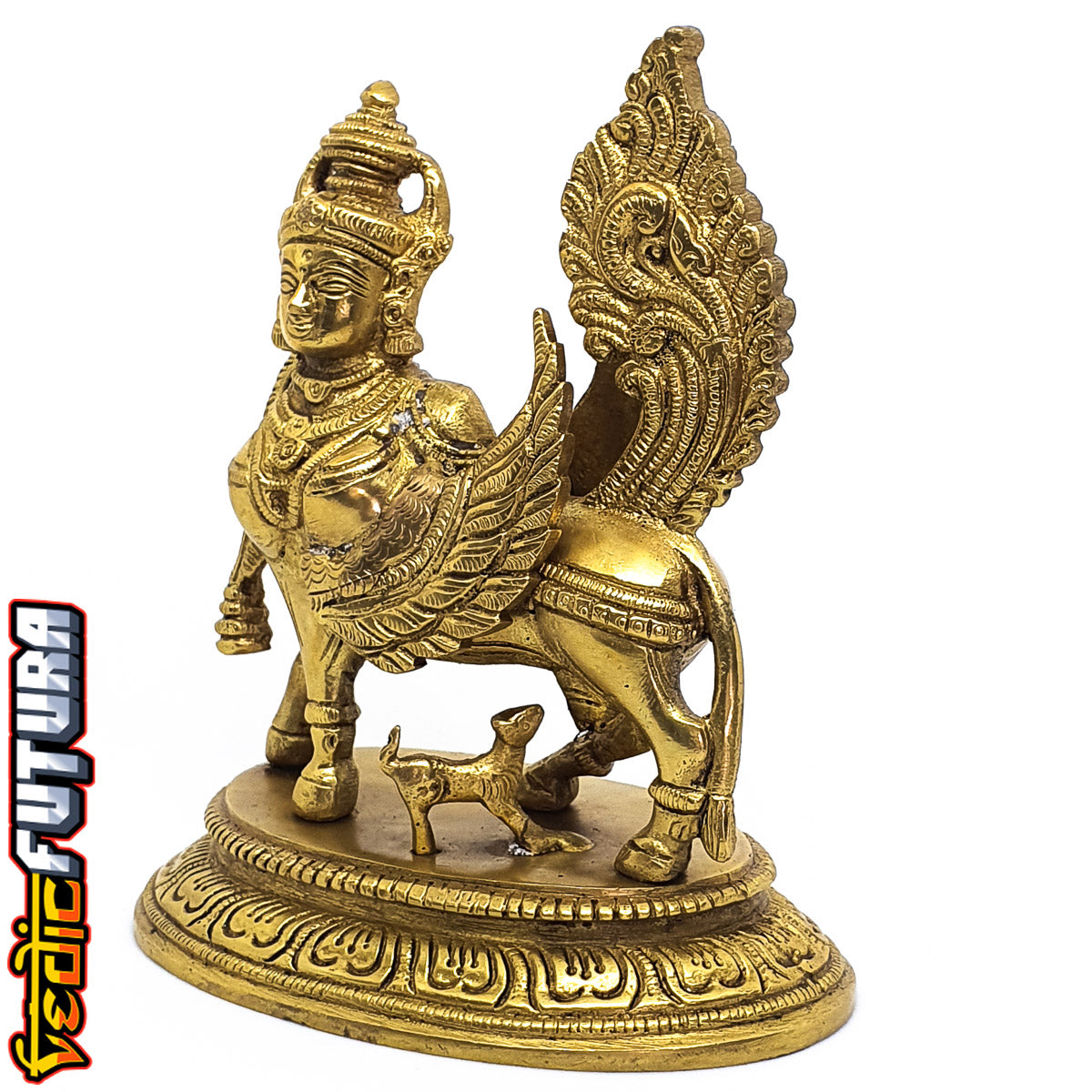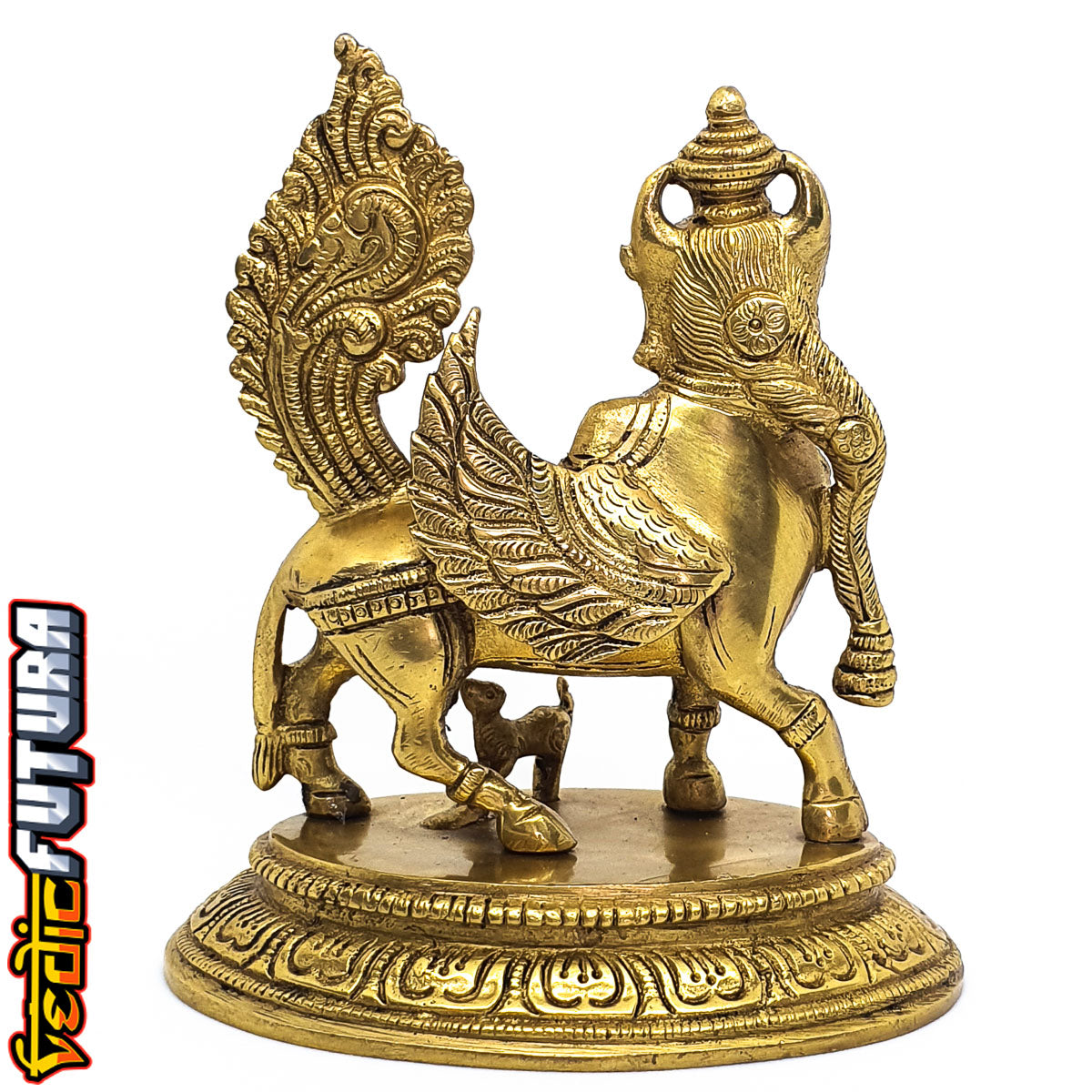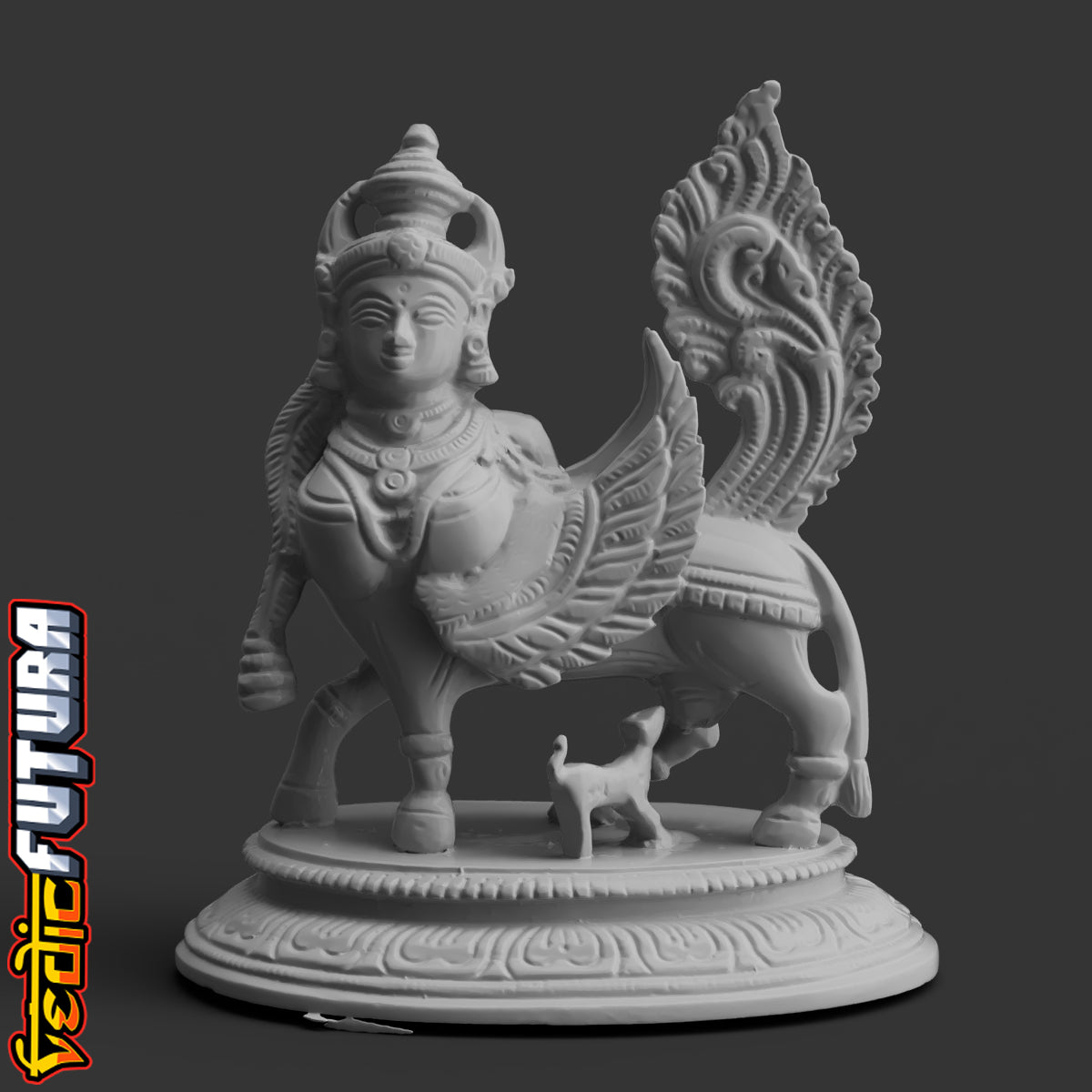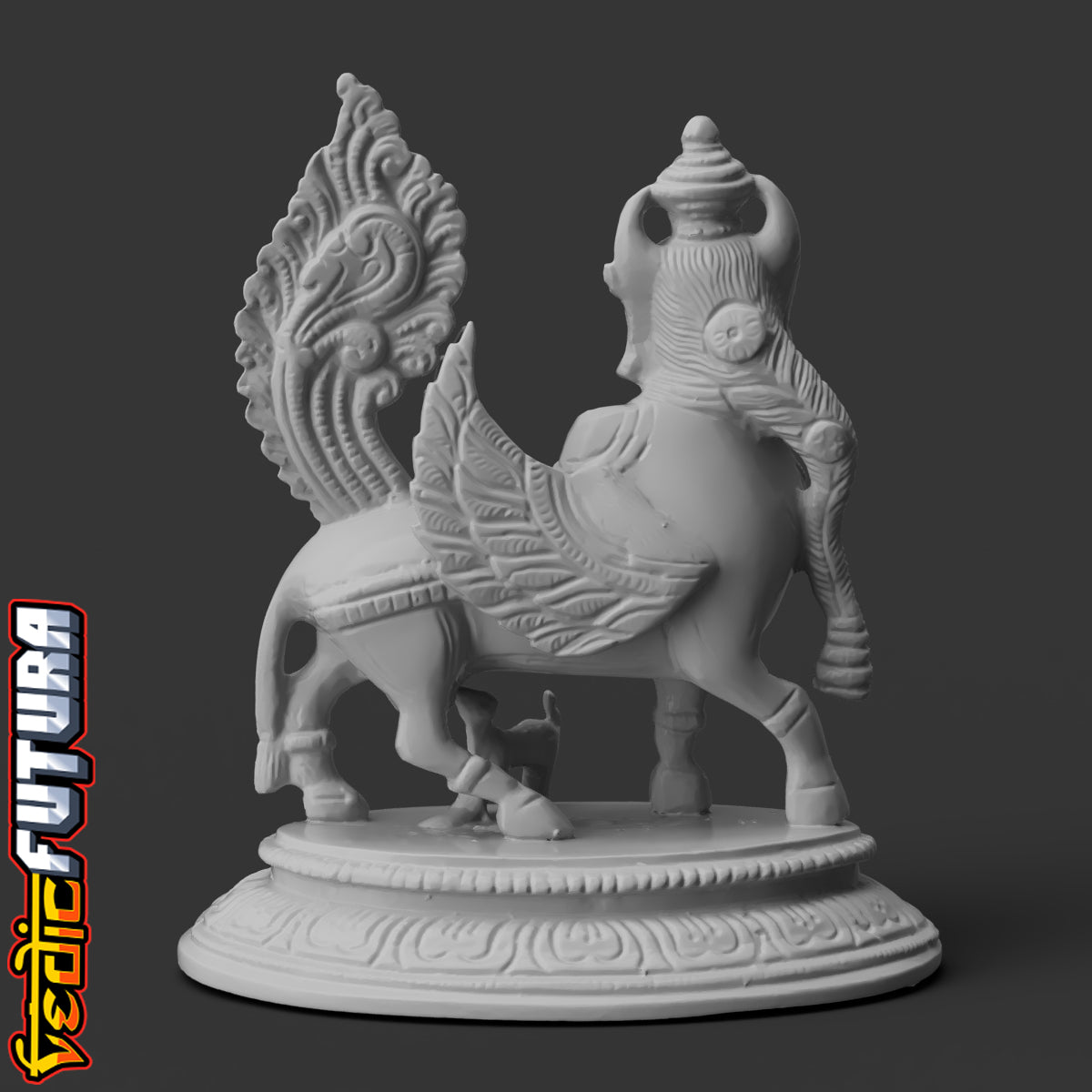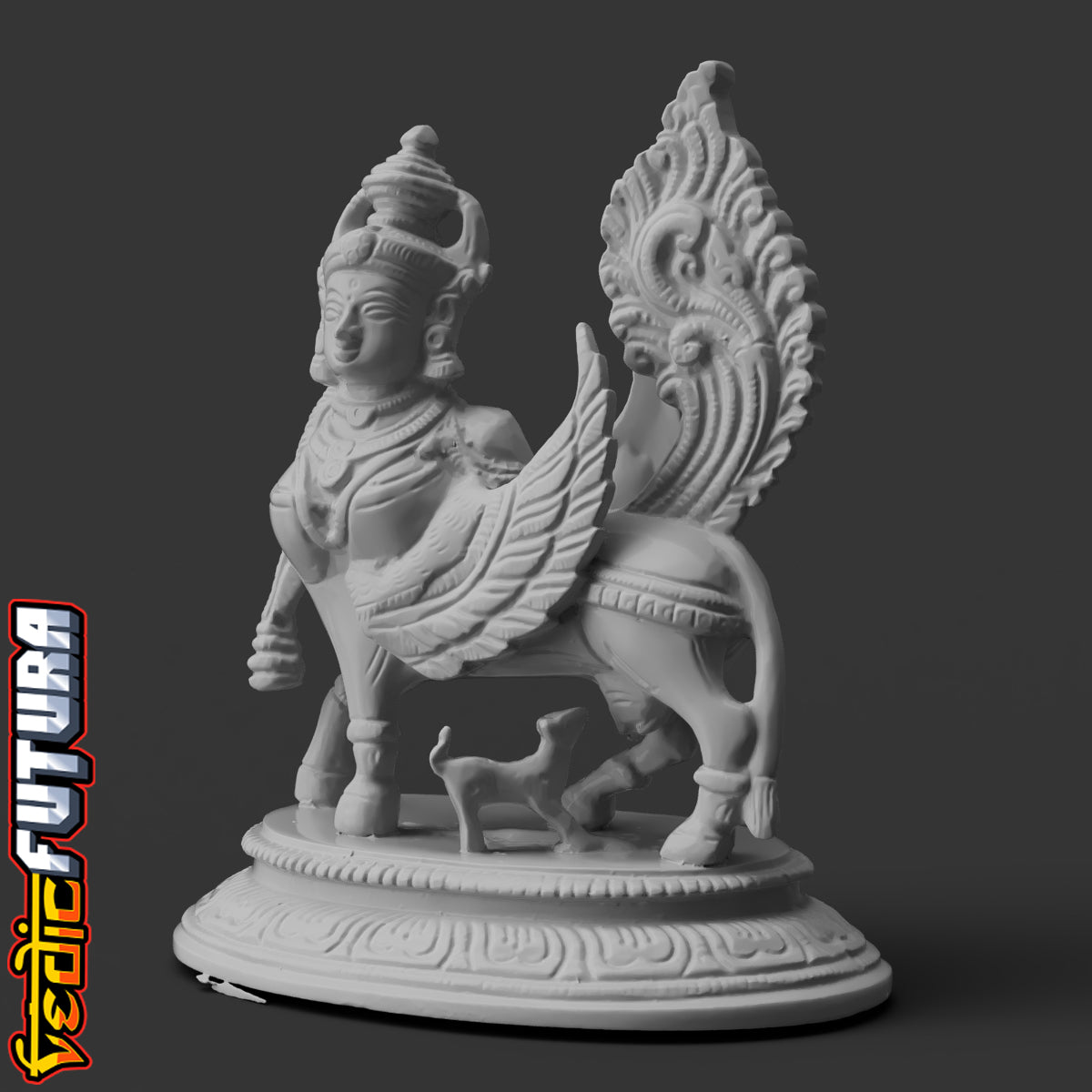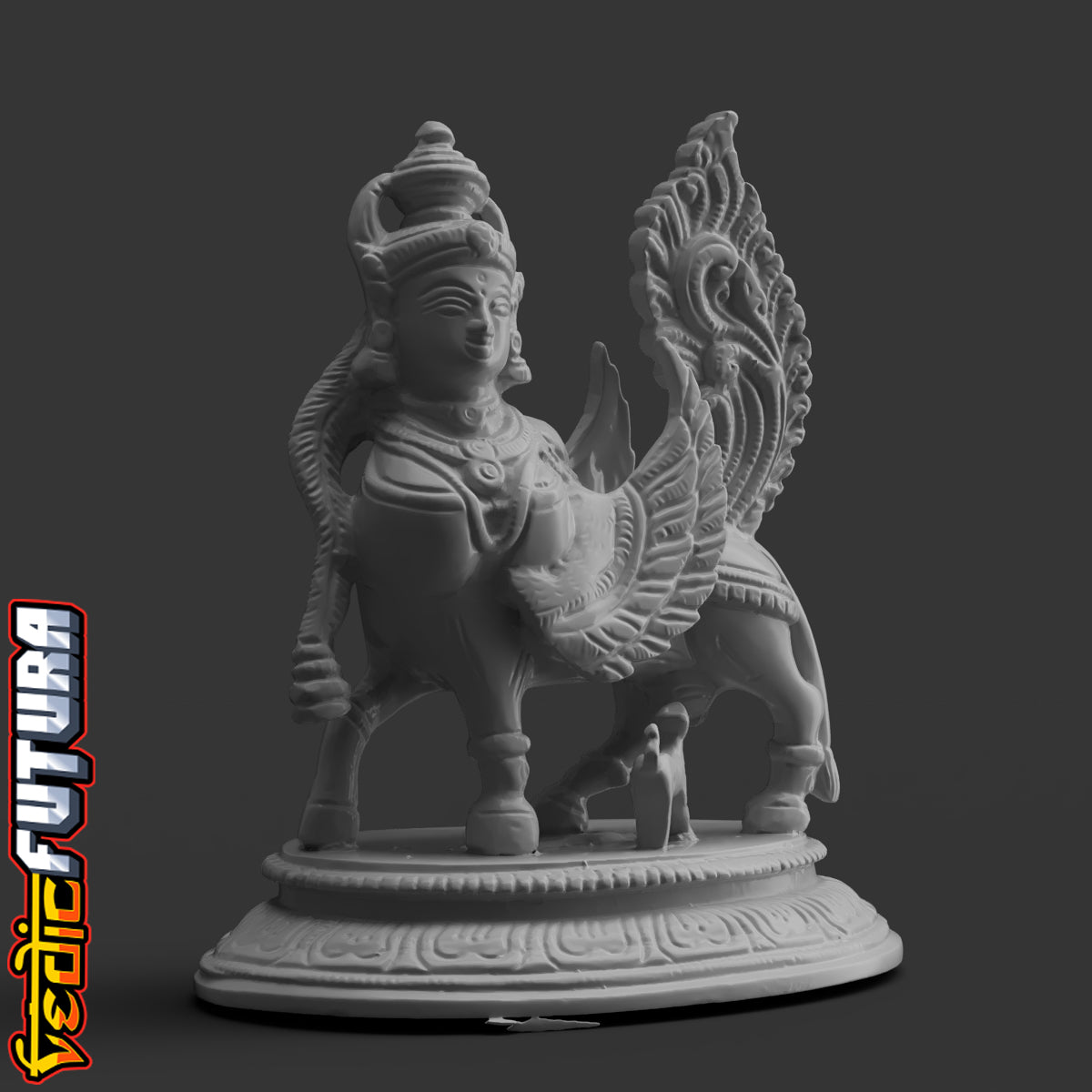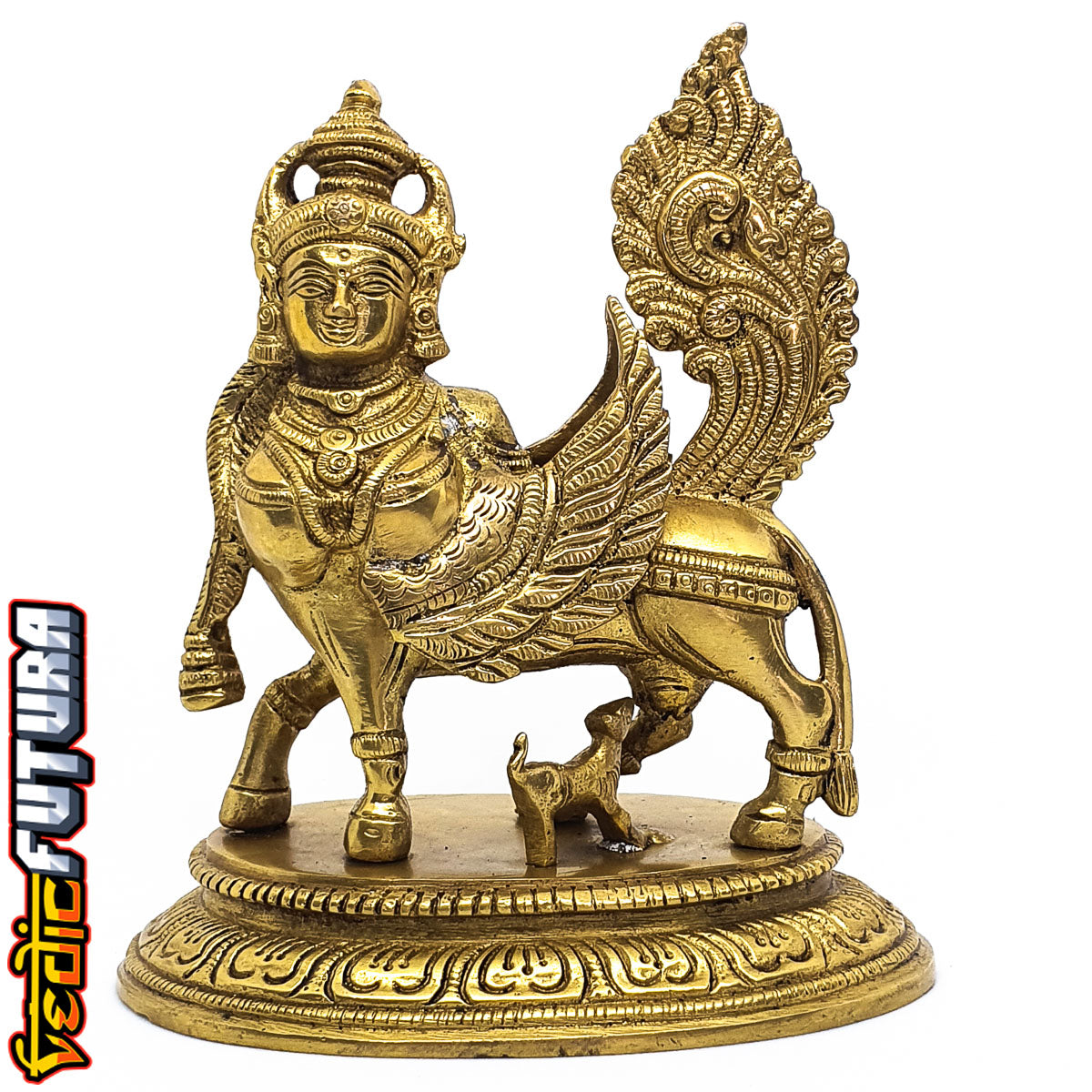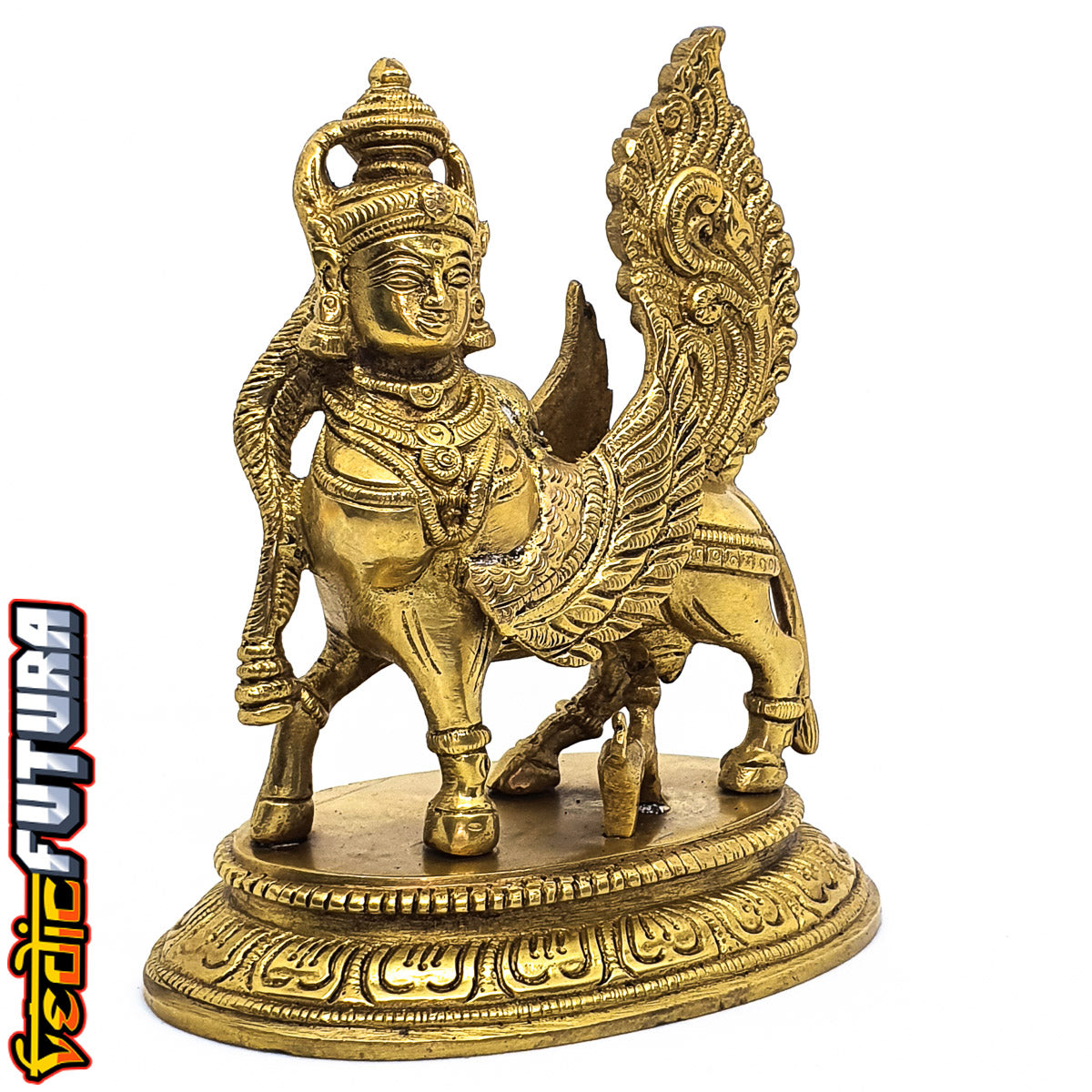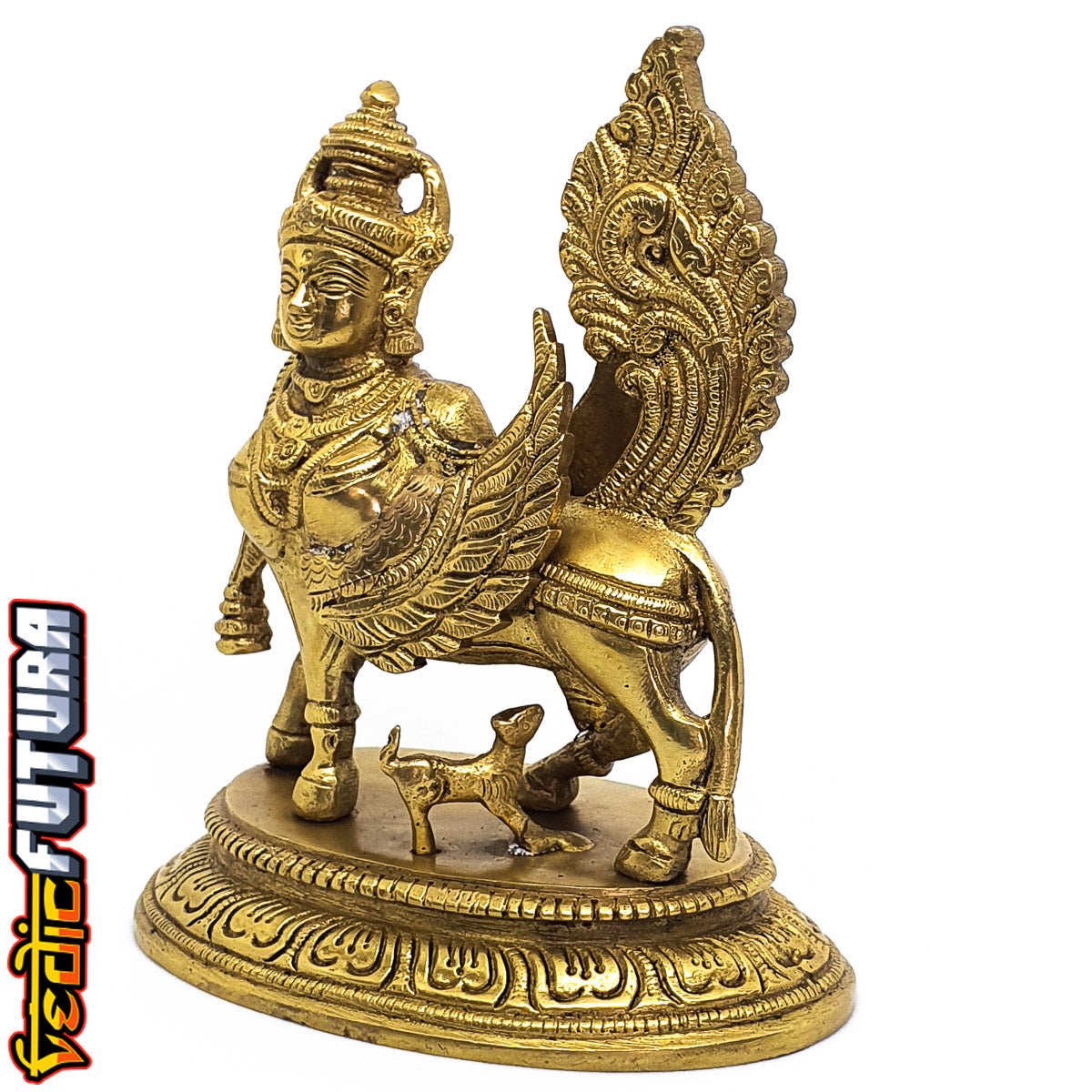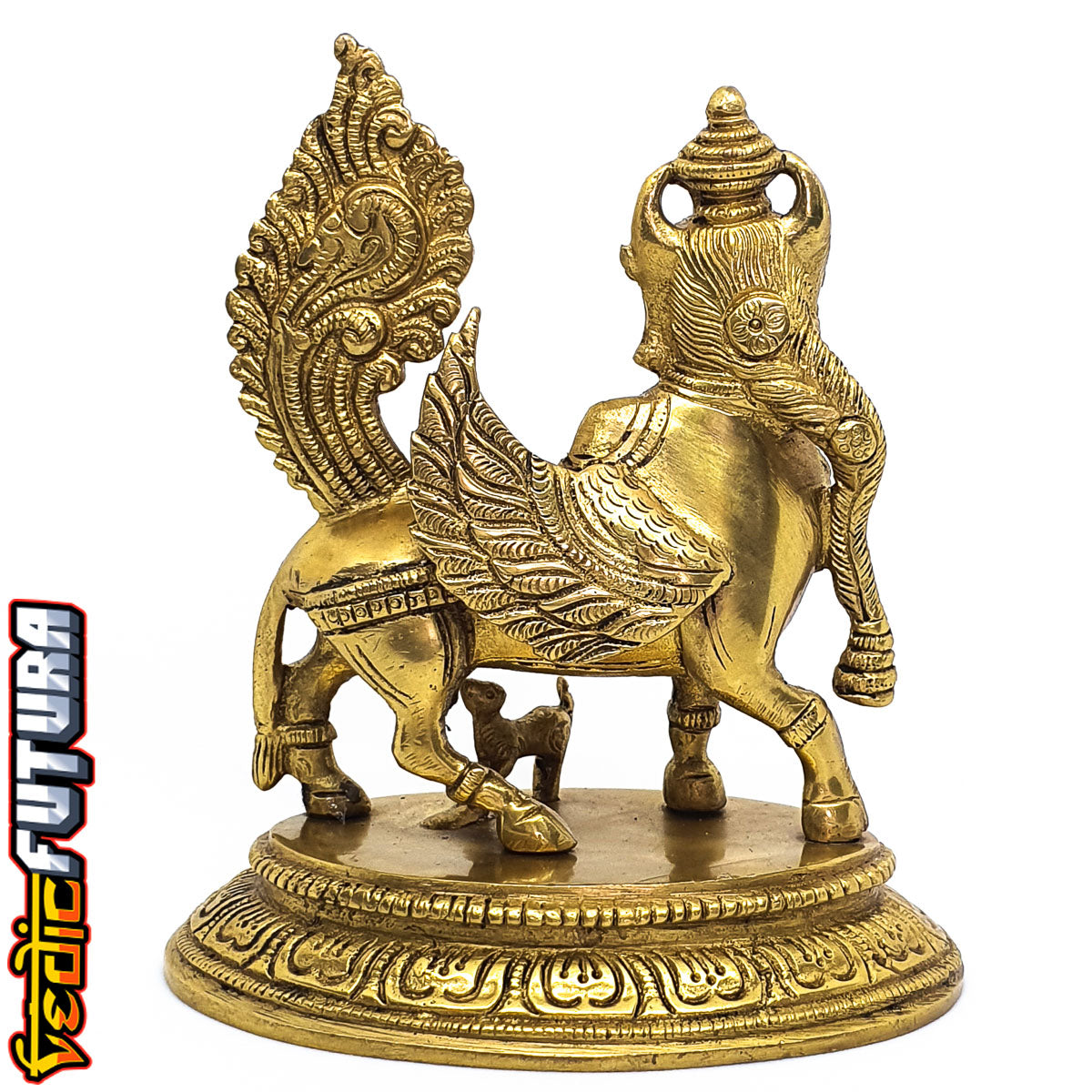Kamadhenu - Mother of all Cows
Kamadhenu - Mother of all Cows
Regular price
Rs. 249.00
Regular price
Sale price
Rs. 249.00
Unit price
per
Couldn't load pickup availability
Kamadhenu [kaːmɐˈdʱeːnʊ], Kāmadhenu) is a divine bovine-goddess described in Hinduism as Gou Mata, the mother of all cows. She is a miraculous "cow of plenty" who provides her owner whatever he desires and is often portrayed as the mother of other cattle. In iconography, she is generally depicted as a white cow with a female head and breasts, the wings of a bird, and the tail of a peafowl or as a white cow containing various deities within her body. All cows are venerated in Hinduism as the earthly embodiment of the Kamadhenu. As such, Kamadhenu is not worshipped independently as a goddess, and temples are not dedicated to her honor alone; rather, she is honored by the veneration of cows in general throughout the observant Hindu population.
In Hindu Religion, Kamadhenu is often associated with the Brahmin ("priest class" including sages), whose wealth she symbolizes. Cow's milk and its derivatives such as ghee (clarified butter) are integral parts of Vedic fire sacrifices, which are conducted by Brahmin priests; thus the ancient Kamadhenu is sometimes also referred to the Homadhenu—the cow from whom oblations are drawn. Moreover, the cow also offers the Brahmin—who is prohibited to fight—protection against abusive kings who try to harm them. As a goddess, she becomes a warrior, creating armies to protect her master and herself.
Some temples and houses have images of Kamadhenu, which are worshipped.[29] However, she has never had a worship cult dedicated to her and does not have any temples where she is worshipped as the chief deity.In Monier-Williams's words: "It is rather the living animal [the cow] which is the perpetual object of adoration".Cows are often fed outside temples and worshipped regularly on all Fridays and on special occasions. Every cow to "a pious Hindu" is regarded as an Avatar (earthly embodiment) of the divine Kamadhenu.
In Hindu Religion, Kamadhenu is often associated with the Brahmin ("priest class" including sages), whose wealth she symbolizes. Cow's milk and its derivatives such as ghee (clarified butter) are integral parts of Vedic fire sacrifices, which are conducted by Brahmin priests; thus the ancient Kamadhenu is sometimes also referred to the Homadhenu—the cow from whom oblations are drawn. Moreover, the cow also offers the Brahmin—who is prohibited to fight—protection against abusive kings who try to harm them. As a goddess, she becomes a warrior, creating armies to protect her master and herself.
Some temples and houses have images of Kamadhenu, which are worshipped.[29] However, she has never had a worship cult dedicated to her and does not have any temples where she is worshipped as the chief deity.In Monier-Williams's words: "It is rather the living animal [the cow] which is the perpetual object of adoration".Cows are often fed outside temples and worshipped regularly on all Fridays and on special occasions. Every cow to "a pious Hindu" is regarded as an Avatar (earthly embodiment) of the divine Kamadhenu.
Please Note: This is a digital 3D model (STL/3mf file) for 3D printing – not a physical object.
No physical product will be shipped.
After purchase, download links will be shown on your screen and sent to your email.
Please read the full website description and terms before purchasing.
